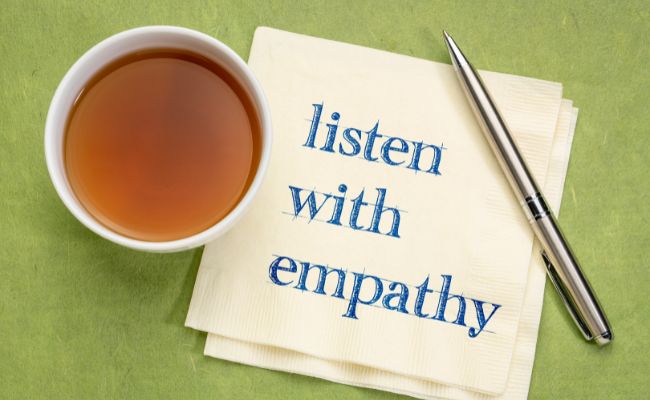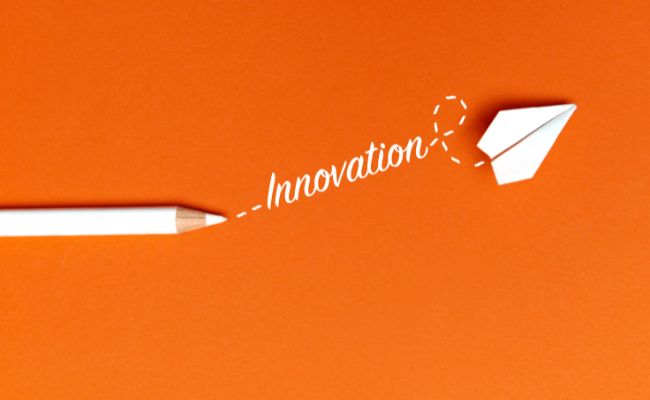Human-Centered Innovation with Sue Bevan Baggott
“If you don’t spend enough time having experiences with people in the context of their lives, you don’t get an opportunity to go deeper and understand their true desires, motivations, and values.” – Sue Bevan Baggott
I had the chance to sit down with Sue Bevan Baggott, a speaker, strategy and innovation leader, angel impact investor, and board member with a proven track record of uncovering deep human insights that lead to impactful innovations and breakthrough business results.
We discuss:
- Why organizations need to start with empathy when innovating
- The three core dimensions of successful innovation
- How leaders can nurture innovation in their companies
Why organizations need to start with empathy when innovating

Innovation is a core part of how businesses stay alive, keep relevancy, and continue to dazzle consumers—that only works if organizations are willing to look closely at their customers and shape those innovations around what they find.
“A lot of people, when they hear the word innovation, they think about technological advancement.” Sue explains, “Technological advancement alone is not enough. If those technological advancements aren't improving human life, they aren't creating value. When I think about innovation, I think about the human side first; who are you serving?”
Sue had the opportunity to work on the Pampers brand and found that this way of thinking spans across industries.
“I distinctly remember one of the German leaders telling me, ‘I know exactly what you need to do. Make the diaper change more like an oil change, get in, get out.' Highly absorbent, highly efficient. That was it. And that was his view of the ideal diaper change. And as a new mom, I wasn't so sure.”
Sue and her team did extensive work to understand their customers at a human level, the lives of parents—particularly moms and babies—and what was happening in their lives.
“What we learned is that the important thing in their lives was developing these strong bonding moments that would help their child to develop healthily and happily, building those bonds that will last a lifetime, ensure that success, and create that positive connection,” Sue explains.
By digging into the true desires of their target customers, they unlocked the empathy needed to create a product in a way that served those desires.
The three core dimensions of successful innovation

If we break down the innovation process, we find three main ingredients that feed into success. Sue broke those elements into three dimensions:
- Desirability
- Feasibility
- Viability
Desirability
Desirability, also known as the human factor, begs the question of if there are enough humans that desire what we're creating and are willing to invest in what we're creating.
Feasibility
Feasibility means asking ourselves if we can bring that desirable experience to life. Do we have the technology, skills, etc., required to create that desirable experience?
Viability
Viability pertains to finding out if there is a business model that allows us to recreate that feasible creation time and time again to ensure we have a growing and sustainable business.
“What can happen is that organizations, particularly those who maybe had a lot of historic success having technical feasibility innovations, can forget about the changes in human context and end up wasting time, effort, and energy establishing feasibility when there isn't sufficient desirability,” Sue explains.
If we look at Apple, they examined the life context of their consumers and targeted their love of music accessibility. They turned that desire into a feasible creation by developing a device allowing people to carry 1000 songs in their pockets.
“If you don't spend enough time having experiences with people in the context of their lives, you don't get an opportunity to go deeper, you don't get a chance to understand their true desires, motivations, and values.” Sue explains, “You need to understand people's functional needs and desires. The most powerful level of desirability is ‘what are people's aspirations? What are their life goals?’”
How leaders can nurture innovation in their companies

Whatever the context, innovation is messy—from corporate to personal, there’s no way around the sticky parts of change, forward motion, and recreation.
“You have these super smart people creating these technological breakthroughs, and some fall in love with their solution. And they forget that, what's most important, is creating value.” Sue points out, “Some people say fall in love with the problem, and that will help you develop better solutions. I say fall in love with the people that you're trying to create value for, and that's where you get the real breakthroughs.”
By starting with desirability instead of feasibility, we establish a human level of need that is more sustainable and valuable overall. “Having that Northstar gives you a general direction and the ability to experiment and iterate with what it's going to take to get you there.” Sue continues.
Staying close to our customers allows for quick catches around changing contexts, priorities, and cultural shifts.
“That's how even very successful companies can get disrupted or surprised if they aren't keeping up with the context, sharing those experiences with the people that they're trying to serve, creating those empathetic connections, and monitoring the important insights that are emerging and the critical changes that are happening,” Sue explains.
One of the first steps to an empathetic, desirability-based approach to innovation is shifting our mindset from iteration to looking at the expanded possibilities:
- Are we looking at the possibilities or are we still focusing narrowly on the technical view?
- Are we fully understanding our customers and taking the human view?
- Are we understanding what's desirable in our customers' lives?
- How can we enable those desirable outcomes for them?
“Those empathetic connections can not only help them do a better job of serving their customers, but they can also create empathetic connections with the people in their organizations, that can drive a lot of positive innovation value.” Sue continues, “Leaders who can create these empathetic connections get the benefit of that insight and that tribe of the people. After all, it's the people who are necessary to create the innovation, at the end of the day.”
Forging empathetic connections is what takes innovation to a transformational level.
Be sure to check out Sue’s full episode for further insights on human-centered innovation, and learn more at PowerWithinConsulting.com!








